

Chris
gamer level 7
24598 xp
24598 xp
followers
22
22
Use my invite URL to register (this will give me kudos)
https://boardgaming.com/register/?invited_by=romanxj9
profile badges




recent achievements

Old Bones
Explore select games by completing a series of exploration actions. learn more »
Explore select games by completing a series of exploration actions. learn more »

Expert Grader
Grade 400 more reviews or tips by clicking "Yes" or "No" in response to the question "Was this helpful?"
Grade 400 more reviews or tips by clicking "Yes" or "No" in response to the question "Was this helpful?"

Junior
Earn Professor XP to level up by completing Professor Quests!
Earn Professor XP to level up by completing Professor Quests!

Bard
Find your favorite games and share them with your friends via the social sharing buttons.
Find your favorite games and share them with your friends via the social sharing buttons.
Player Stats
Critic (lvl 3)
845 xp
845 xp
Explorer (lvl 4)
2200 xp
2200 xp
Professor (lvl 3)
761 xp
761 xp
Reporter (lvl 3)
856 xp
856 xp
About Me
I've been a gamer since 1977; primarily rpgs, but who has the time anymore? Nowadays, I play mostly boardgames of various types.
Battlestations (by Gorilla Games), Above and Below (by Red Raven Games), Snippets, and Pandemic to name some favorites.
Recently, I have been playing some rpgs again---The One Ring (by Cubicle 7), Symbaroum (by Jarnringen), and the Lone Wolf Adventure Game (also Cubicle 7).
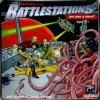







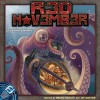



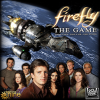



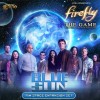




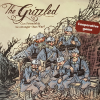











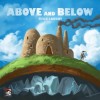
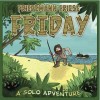

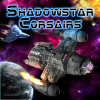



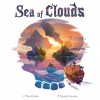




















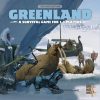















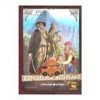
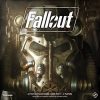
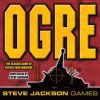



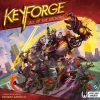

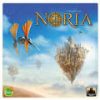










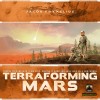

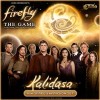
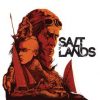


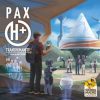
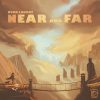
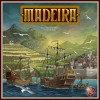

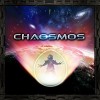

















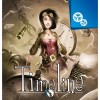



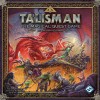









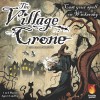
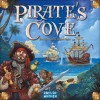
























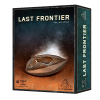

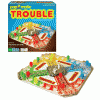
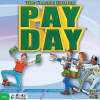






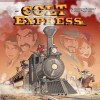





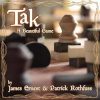
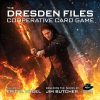






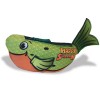

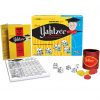




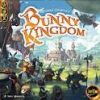




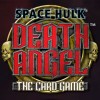

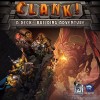

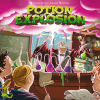






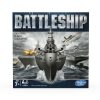

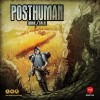
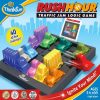

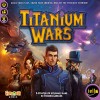












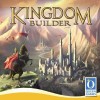

















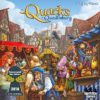






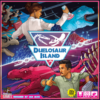









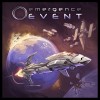











Above and Below
Above & Below is the first game in Ryan Laukat’s Arzium setting. This family also includes Islebound and Near & Far; I gather that there may be at least one more game coming (as of this writing), but I don’t know what it might be just yet.
In Above and Below each player controls the actions of a number of refugees as they strive to build a new home in a strange land. The events detailing the loss of their former home are chronicled (lightly) in the rulebook, but happen before play begins.
At the start of the game, each player (2-4) has three villagers each with their own skills which they will need to build a new village. The game played over a set number (7) of rounds in which each player takes as many actions as she can until there are no more villagers to activate. Play then passes to the next player. Once all players have performed as many actions in their turn as possible, the round ends, some book keeping is performed, and the next round begins. After 7 rounds, victory points are tallied and the winner is determined.
Simple, right?
Not so fast…
Let’s start by looking at the villagers. Each of a player’s starting villagers will have some symbols on the top—a Hammer (he’s a Builder), a Quill (she’s a Trainer), and all villagers will have one (or more) d6s on them with a number (1-3) of small lanterns beneath them. Builders, well… build things, and Trainers train new villagers to grow your population. You start with one Builder with a Hammer and one die, one Trainer with a Quill and one die, and one non-specialized villager with two dice but no skill icon.
On your turn you can perform various actions:
Forward! To Adventure!
OK, so you’ve chosen some villagers to go underground. Did you choose the right ones? This is where those dice symbols on the villagers will come into play. Look at the villagers; each one has at least (a possibly two) dice symbols with some lanterns (aka exploration successes) beneath them. The value on the die face must be equaled or exceeded on 1d6 in order to score the indicated number of successes; so a die showing 5 with 2 lanterns beneath it means you need to roll a 5 or 6 in order to gain 2 successes. Why do I need successes?
So, now you’ve chosen your villagers. Next you draw a card off of the Cave deck. This card will have six die results on it, each with a number beside it. These numbers represent a specific paragraph in the Adventure book. You pick a card, roll 1d6, and get a result. One of the other players takes up the Encounter book, turns to the indicated paragraph and reads it to you, thusly (NO SPOILERS):
31. Your party reaches a camp in a sandy-floored cave. A lone man with a short beard sits near a fire, roasting what looks like a rodent of some kind on a stick. ‘Got anything to trade?’ he asks. Do you sit and haggle or keep exploring?
Keep Exploring: Explore 3 (reward)
Trade With the Man: Explore 3 and pay 1 Coin (reward), Explore 6 and Pay 1 Coin (reward)
The first part sets the scene for you. The next parts offer you possible choices (Keep Exploring vs Trade) as well as how many successes you’ll need to accomplish the various choices (3, 3 or 6). All of these things are read to you; what isn’t read to you are the rewards. Rewards can be various items—Coins, Goods, etc…—sometimes, it can point you on to another paragraph (for a longer adventure), or, it could even lead you to find a unique special villager (such as the Metal Man).
Now, you choose you option—say, Trade with the Man—and roll 1d6 for each villager on the adventure. You compare your die rolls to the symbols on their tokens and see how many successes you got. If you got a number equal to or greater than one of the success options, you get the reward. In the above example, if you chose to Trade, and you got 4 successes you could pay the man one coin and gain the reward for 3 successes. If you got 6 successes and pay him one coin you would get the reward listed for that level of success (not both rewards for 3 and 6, just the reward for getting 6).
Now, if you didn’t get successes to get a reward (say you only got 2) you may choose to injure a village for an additional success. For each villager you choose to injure, you’ll get an additional success, but it will take them longer (potentially) to recover and be ready to perform actions of future turns, so choose wisely.
Neat, huh?
But wait! That’s not all… IF you succeeded at your adventure you also have scouted out a place Below ground where you can build an Outpost. Outposts are much like the buildings you build above ground—you need a builder to build one, you choose it from the current list of four available Outposts, they take Coins to build, and they give you some sort of bonus/perk for having built them. Unlike Above ground buildings which you can pretty much just build willy-nilly, you have to have a cave card (which you get by succeeding at an adventure) to build an Outpost on. However, many of the Goods which are available in the game—Amethyst, Fish, Mushrooms, and Ore—are ONLY available from Outposts (we’ll come back to why you want goods soon). The other reward you can gain from Exploring is Reputation. At the end of the game, the player with the highest reputation will gain additional victory (Village) points; have a very high (or very low) reputation can also gain (or cost) you victory points.
Now, Goods; each player has a Player Board where he keeps track of his Villagers, Coins, and Goods. Goods can be placed in various places on/around the board; placed up for sale to other players, held aside for use later, or they can be committed to your Advancement Track (at the bottom of your Player Board). The Advancement Track has a number of spaces on it for goods to be placed. Each space can only hold one type of Good, and once chosen, can only hold that specific Good for the rest of the game (choose wisely). Placing Goods on the track does two things: 1) increases you Income (aka the number of Coins you will get at the end of each round. Income starts at 4, and then goes up from there). It also gains you victory points at the end of the game. Each space on the track will have a victory point amount associated with it (ranging from 1 to x); at game’s end, you’ll gain a number of victory points equal to that number times the total number of Goods in that space (so if I have 5 pieces of Rope on a space worth 2 VP, I’ll get 10 VP at game’s end).
OK, so you’ve built, labored, harvested, trained, and explored, and now all your villagers are shagged out. Not having any further villagers to exploit, err… activate… you declare a Pass and play moves to the next player who does the same to her villagers.
At the end of each round (after all players have had a turn) various bookkeeping takes place:
If you reach bookkeeping and are unable to advance the round marker, do not perform any of the rest of the bookkeeping actions. Instead go straight to Village (victory) point calculation and determine the winner.
There’s a lot going on this game, and various paths to victory. You’ll need to balance the availability of your Villagers, with your ability to rest the sufficiently to be able to use them on the next round. You’ll need to look at what buildings are available to be built and what bonuses they grant you. Some are good for harvesting Goods, while others allow you to rest more villagers, others grant you bonuses to use while Exploring, and still others grant you Village points outright (or based on how many villagers/resources/etc… you have at game’s end).
I like Above & Below, but don’t play it very often. It takes a little bit to set up (not as much as others, say Firefly or Twilight Imperium, but more than say The Lost Expedition). My biggest gripe with it is that seven rounds seems just a wee too short. I like having a set number of rounds, it limits the game from going on endlessly, but seven often seems abrupt. It seems that you get your engine going right around round 5 or 6, and then only get to exploit it for a round or two at most.
That being said, it can lead to some surprise endings as one player suddenly jumps out ahead as the VP leader.
As always, my highest recommendation is that I would buy this game, but I already own it, so you decide how I feel about it.